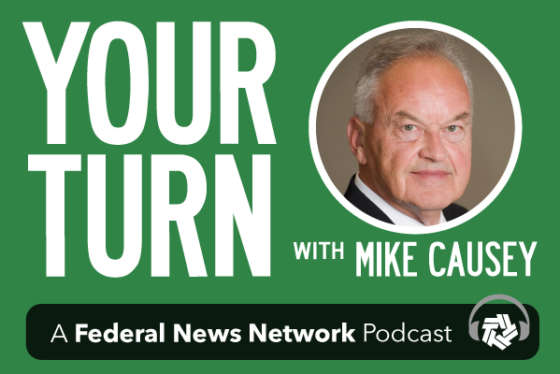
Some relatively good money news to interrupt the gloom
Over the past five months, there have been some major changes to the tax code that could impact the amount you pay and how effectively you use the money in your...
Best listening experience is on Chrome, Firefox or Safari. Subscribe to Your Turn’s audio interviews on Apple Podcasts or PodcastOne.
Over the past five months, there have been some major changes to the tax code that could impact the amount you pay and how effectively you use the money in your Thrift Savings Plan if at all.
Before the pandemic, in December, the president signed the Setting Every Community Up for Retirement Enhancement (SECURE) Act.
And as many of Americans found themselves working from home, the Coronavirus Aid, Relief, and Economic Security (CARES) Act became law on March 27.
Estate and tax attorney Tom O’Rourke told Your Turn with Mike Causey about SECURE and CARES, as well as an overview of “a number of administrative developments that the IRS has implemented.”
As he does in his practice in the Washington, D.C., metro area, O’Rourke focused on how the tax changes will apply to federal employees with TSP investments.
Should a person pay taxes upfront by investing in a Roth TSP — which is taxed when money is put the money in and is tax-free when money is pulled out in retirement — or is it better to put money, tax-free, into a traditional TSP and pay taxes on your withdrawals, years later, in retirement?
“The most accurate answer to those questions is: ‘It depends,’” O’Rourke said. “It depends primarily on what your tax bracket is now and what you expect your tax bracket to be when you actually start drawing money out.”
He said the only way to know is “to do your own personal analysis based on what tax savings you would realize right now, what it would cost you to put money into a Roth TSP, and what tax bracket you expect to be in when you ultimately retire.”
The Roth TSP will cost you more upfront, while it offers a potential tax benefit in the future.
The CARES Act did many things, most notably authorizing rebate checks of varying amounts, sent to Americans who qualified. If you were one of those people, you have possibly received that check already.
CARES also made it easier to access money in a tax-deferred account, like an IRA or TSP. And for 2020, CARES temporarily suspended the obligation to take a required minimum distribution.
“The SECURE Act meanwhile, extended the date on which a retiree must begin to take required minimum distributions from age 70 ½ to 72,” O’Rourke said.
One negative change brought on by the SECURE Act has to do with the so-called, “stretch IRA.” In the past, if someone died the person who inherited the deceased’s IRA could hang onto it for a decade and let it grow in value, tax-free. The SECURE Act eliminated that time frame, requiring the beneficiary to withdraw all the money in the IRA within 10 years.
Copyright © 2025 Federal News Network. All rights reserved. This website is not intended for users located within the European Economic Area.
Peter Musurlian is a producer at Federal News Network.
Follow @PMusurlianWFED




